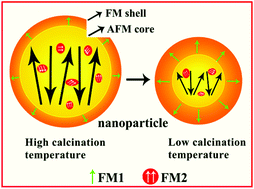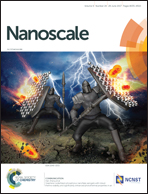Engineering the exchange bias and bias temperature by modulating the spin glassy state in single phase Bi9Fe5Ti3O27†
Abstract
Exchange anisotropy is normally observed at ferromagnetic (FM)/anti-ferromagnetic (AFM) interfaces and also usually at low temperatures. An effective way to find new single-phase materials with strong exchange bias (EB) and high operation temperatures is required for making them useful in practical applications of future spintronic devices. In this work, the exchange bias behaviors of single phase Bi9Fe5Ti3O27 (BFT) were found able to be manipulated by altering its spin glassy state, when the material was intentionally prepared in the nanobelt format. A core–shell model has been proposed to explain the controllable behavior of both exchange bias and bias temperature, in which the AFM domain could be effectively reduced within the nanobelts when changing their particle sizes. A direct observation of two spin glassy behaviors corresponding to two distinct peaks in the zero field cooling (ZFC) curves manifests the validity of the proposed core–shell model.



 Please wait while we load your content...
Please wait while we load your content...